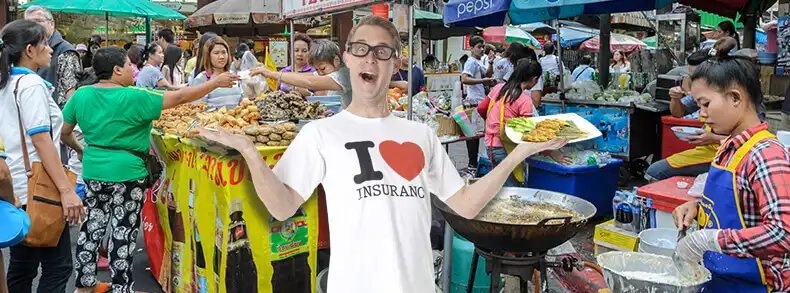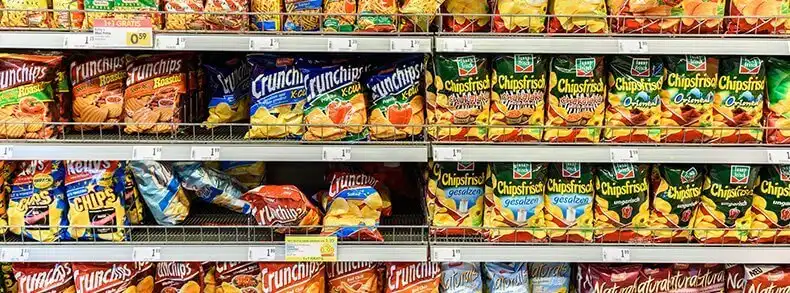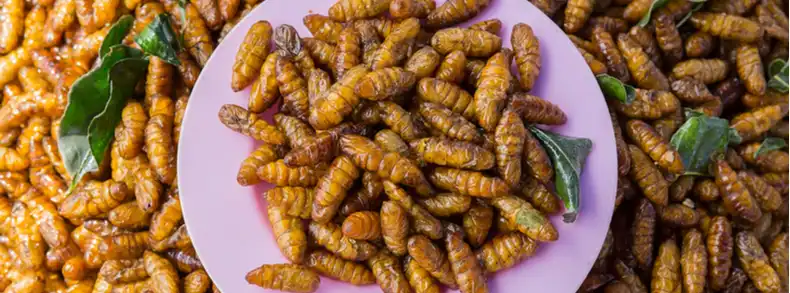I'm in the mood for street food!

One of our favourite things about travelling is street food. Whether it’s Nutella waffles in Rome, tacos or samosas in Mexico or chai in India, street food is definitely the most delicious (and not to mention cheapest) way to get a feed abroad.
You will lose track of the amount of people who warn you not to touch the street food in places like India and China etc. Tales of Delhi belly, Thai tummy and food poisoning scare many people out of it, but as long as you keep in mind these simple tips, there’s no reason not to munch on everything you see! Keep reading to see how to eat safe on the street!
#1 Some like it hot! Keep an eye on your chef
Many people assume that street food has been sitting on a dusty mat on the side of the road for days before it gets into your mouth. This is generally not the case. We all know that boiling food or water kills germs, and the best thing about most street food is that you order it, and they cook it there and then.
Steer clear of pre-cooked food sitting in containers unless your master street chef is going to chuck it in the wok for a couple of minutes before serving.
#2 Frostbite: Beware of ice

Tap water is a ‘no no’ in many countries – we forget how blessed we are at home to clean our teeth every day with fresh, clean water. Overseas, restaurants and street vendors may use bottled, filtered or boiled water when cooking, but you can’t be 100% sure. If you can, make sure food is washed using bottled water and avoid ice when ordering drinks.
#3 Be on the lookout
Using your common sense can be your best tool when it comes to eating safely. Always be weary and check out the conditions of the kitchen or cooking areas where you are about to eat from, and avoid them if they look unsanitary. Always give your food a quick check like cutting meat to see if it is fully cooked through (no pink bits!). If you can, avoid items such as unpasteurized dairy and eggs which carry a higher risk level.
#4 Prioritise hygiene
Washing your hands thoroughly before eating abroad will reduce the number of bacteria or microbes. This is especially important where your body has never been exposed to certain germs of a new country. Carry alcohol-based hand sanitizers as they are quick, handy, and extremely effective.
#5 Pack some emergency snacks

When you don't have access to a supermarket make sure to stock up on packaged snacks. Commercial food has an extremely slim chance of making you sick. When you can’t find any safe-looking places to eat and the hunger pangs start kicking in, you'll be thankful you packed some pre-packed munchies. You’ll also get to try a range of different items and flavours you wouldn’t get back home.
#6 Give the local delicacies a go

Travelling is all about adventure, so don’t be afraid to live a little. If you’re in a bustling market and you come across a busy stall selling deep-fried insects, try one. When deep-fried, they’re perfectly safe, as germs will most likely have been obliterated by the heat. To be safe, ask around to find out which vendor produces the best bites or choose the stall with the most travellers and locals hovering about. Who knows, you might even be pleasantly surprised by the salty crunch!
#7 Travel Insurance
Worst case scenario is you get sick and need to seek medical treatment. Be sure to purchase a travel insurance policy before you leave so you are covered for any unexpected medical costs.

Natalie Smith
Having travelled to over 40 countries, studied tourism management and worked as a flight attendant for over three years, Natalie knows more than a thing or two about travel! She’s an adventure-lover, whose favourite trips have been trekking Machu Picchu and volunteering in an animal shelter in the Amazon. Qualified in Tier 2 General Insurance General Advice and specialising in travel insurance for the last five years, she in passionate about helping travellers get the most out of their holiday.








